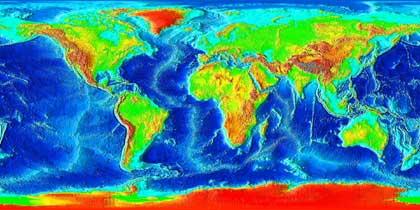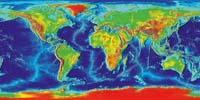Simulating the continental drift
2008/06/26 Lakar Iraizoz, Oihane - Elhuyar Zientzia

Physicists at the University of New York wanted to explain through a simple experiment the reasons why the continents of the Earth are separated and meet every hundred million years.
They simulated the effect of the variable thickness of the earth's surface on the convection current of the lower mantle. A three-liter tank was filled with water and glycerin, heating the liquid with a hot sheet under. Once the water was heated and the convection current formed, with balls of about three millimeters of diameter, they covered half the surface of the bottom.
Due to the convection current generated by the heat, the balls were piled to one side of the tank. In this way, the balls prevented the passage of the heat emitting the plate, and the part that did not contain the ball became the part with greater force to heat the liquid, which caused the return of the current. Then the balls began to push over and began to move up to the other end of the boat. Then the process is resumed.
Physicists say something similar happens on Earth. The continents would have the same influence as the balls of the experiment and would hinder the heat emitted by the terrestrial mantle. Consequently, heat storage would occur under the continents, which would periodically provoke a change of sense of the streams of the mantle. This would mean a displacement of the continents.
Image: Image: Cornell University

Gai honi buruzko eduki gehiago
Elhuyarrek garatutako teknologia






